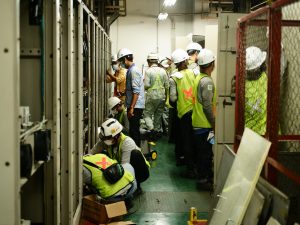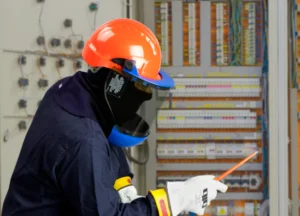In high-risk sectors such as oil and gas, construction, and manufacturing, safety compliance is not a luxury—it’s a legal and moral obligation. Yet, many organizations still cut corners or adopt a reactive approach to health, safety, and environment (HSE) standards. The consequences can be devastating. This article explores the real cost—financial, legal, operational, and human—of ignoring safety compliance in high-risk industries.
What Is Safety Compliance?
Safety compliance refers to the adherence to safety laws, regulations, industry standards, and internal protocols that govern workplace safety. It ensures that:
- Employees operate in safe conditions
- Proper procedures are followed
- Certified equipment and PPE are used
- Accidents are prevented or minimized
- Documentation and training are up to date
In Nigeria, regulators such as the Department of Petroleum Resources (DPR), the Nigerian Safety and Fire Protection Association (NSFPA), and international bodies like OSHA enforce compliance.
The High Price of Non-Compliance
Let’s break down the cost of ignoring safety compliance:
1. Financial Penalties and Fines
Regulatory bodies impose heavy fines on organizations that violate safety protocols. These penalties vary based on the severity of the violation but can include:
- Daily non-compliance fines
- Project shutdowns
- Permit suspensions
- Loss of operational licenses
In some cases, companies have paid millions in lawsuits and government fines following workplace fatalities.
2. Legal and Criminal Liability
Non-compliance often leads to legal battles:
- Injured employees may sue for compensation
- Families may take legal action for wrongful death
- Company executives may face criminal charges for negligence
- Litigation costs and court settlements can drain corporate finances
3. Operational Downtime
When an incident occurs or a violation is discovered:
- Operations are halted for investigations
- Sites may be sealed off
- Equipment may be impounded for inspection
- Contractors and partners may pull out
The result is lost productivity, missed deadlines, and broken supply chains.
4. Reputational Damage
In today’s digital world, one safety incident can become viral news. Non-compliance can lead to:
- Loss of investor confidence
- Negative media coverage
- Distrust from clients and partners
- Difficulty attracting skilled talent
Reputation loss can take years to rebuild—if it ever fully recovers.
5. Employee Morale and Turnover
Unsafe working conditions erode trust. Employees who feel unsafe or undervalued are more likely to:
- Quit their jobs
- Lower their productivity
- Refuse to report hazards due to fear of retaliation
- Suffer from stress and mental fatigue
Recruitment and retraining costs rise as experienced staff leave.
6. Human Cost – Injury, Illness, and Death
Perhaps the most tragic cost is the loss of human life or permanent injury. The consequences of a single safety lapse can include:
- Lifelong disability
- Trauma and PTSD
- Family hardship
- Loss of skilled labor
Safety isn’t just policy—it’s personal. One life lost due to negligence is one too many.
Why Do Companies Ignore Compliance?
Despite the risks, some organizations still cut corners. Common reasons include:
- Budget constraints
- Lack of awareness or training
- Inadequate supervision or audits
- Overemphasis on speed over safety
- Weak enforcement of safety culture
But what seems like a cost-saving tactic often ends up costing far more.
Case Example (Nigeria)
In 2021, a local petroleum company in the Niger Delta was fined heavily and had its operations suspended for multiple HSE violations that led to an explosion, killing three workers. The aftermath included court cases, client contract losses, and over a year of operational disruption. A strong compliance culture could have prevented it all.
Building a Culture of Safety Compliance
Avoid these catastrophic outcomes by:
- Implementing strong internal HSE policies
- Assigning dedicated safety officers
- Investing in PPE and training
- Conducting routine safety audits
- Ensuring leadership commitment to compliance
- Partnering with certified safety service providers
Conclusion
The cost of ignoring safety compliance goes beyond financial loss—it affects lives, livelihoods, and long-term business sustainability. For high-risk industries, compliance is not just a line item—it’s a foundation. Prioritize safety now or pay the price later.
SOC Energy Services Ltd – Your Partner in Safety Compliance
We help organizations in Nigeria’s high-risk industries meet HSE standards through certified PPE, training, and procurement services. Let’s secure your workplace and protect your future. Call us today.





